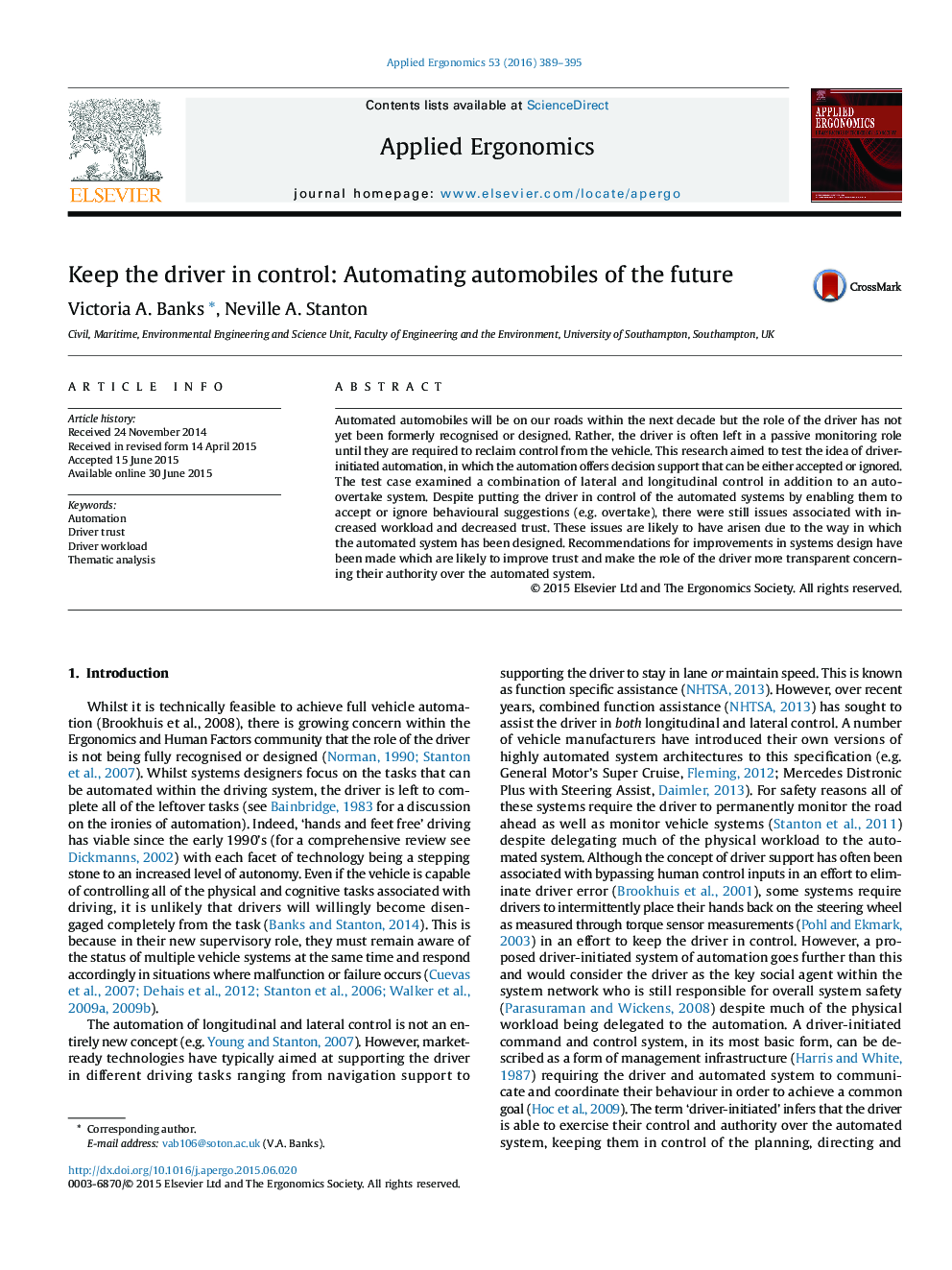| Article ID | Journal | Published Year | Pages | File Type |
|---|---|---|---|---|
| 548320 | Applied Ergonomics | 2016 | 7 Pages |
•Driver-initiated automation leads to increased workload and decreased trust.•Driver protocols and behavioural observations highlight systems design issues.•Recommendations for future systems development discussed.
Automated automobiles will be on our roads within the next decade but the role of the driver has not yet been formerly recognised or designed. Rather, the driver is often left in a passive monitoring role until they are required to reclaim control from the vehicle. This research aimed to test the idea of driver-initiated automation, in which the automation offers decision support that can be either accepted or ignored. The test case examined a combination of lateral and longitudinal control in addition to an auto-overtake system. Despite putting the driver in control of the automated systems by enabling them to accept or ignore behavioural suggestions (e.g. overtake), there were still issues associated with increased workload and decreased trust. These issues are likely to have arisen due to the way in which the automated system has been designed. Recommendations for improvements in systems design have been made which are likely to improve trust and make the role of the driver more transparent concerning their authority over the automated system.
